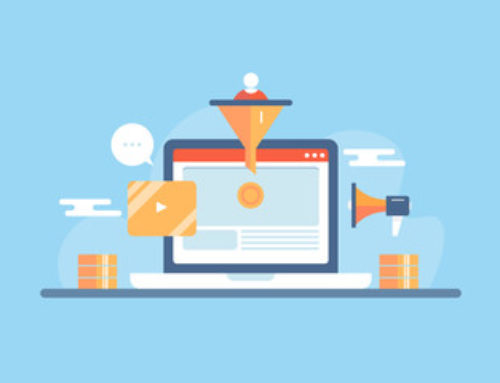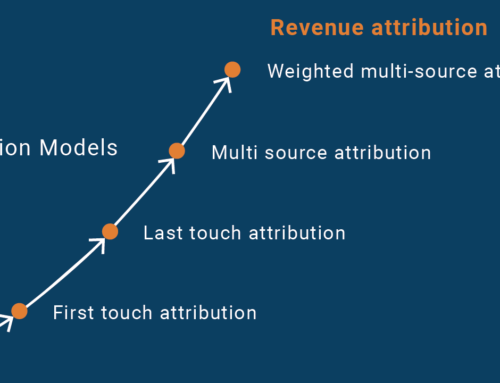Would you rather pay $7 for a pack of chewing gum… or $1?
That wasn’t a trick question.
Unfortunately, a lot of businesses are getting the answer wrong. They’re paying too much—magnitudes more than they should be—for something they could’ve gotten for much cheaper. They’re getting ripped off.
These businesses are the ones bending over backwards to acquire new customers while the ones they had slip through the cracks.
Tired of constantly scrambling to replace lost customers?
Want a smarter approach to sustainable growth?
Let’s start out covering where most businesses go wrong when it comes to customer retention. Then you’ll find out what you can do to keep your customers happy, engaged, and spending.
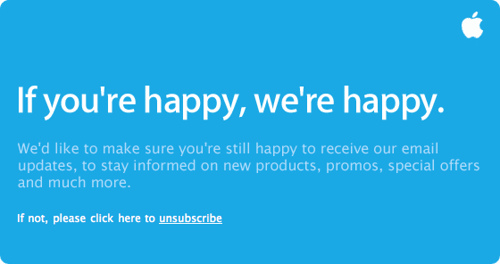
Image credit: Tomosaurus via Compfight cc
Making the Sale is Just the First Step
In today’s competitive online space, making a sale can take a lot of work. It’s easy to get caught up thinking that landing the customer or client is the same thing as reaching the finish line.
But making the sale is just the first step. It’s the beginning of a new relationship you can nurture for months and years to come.
Client acquisition is an essential part of growing your business—especially if you’re just getting started. But it also costs about seven times as much as retaining a customer you already have.
Businesses get into trouble when they focus too much on bringing new customers in the door; they end up overlooking the ones they already have. Churn, the process of gradually losing a percentage of your customer base, becomes a regular (and painful) reality.
A lopsided focus on acquisition also makes sustained growth next to impossible. You have to scramble constantly just to replace the customers you lose every day, much less gain any ground.
The High Cost of Losing Customers
Losing customers month after month carries a huge opportunity cost—one that can mean the difference between a profitable business and a failing one.
First, it’s much easier to sell to current customers than new ones. They’ve already bought from you; they’re much more likely to do it again. But only if you keep them around long enough to give them the opportunity!
Customers can also turn into excellent referral sources and brand advocates. No matter how talented your sales team, prospects are more likely to trust the recommendation of a friend or third party. There aren’t any ulterior motives involved, making testimonials an incredibly powerful tool to drive new business.
Finally, customers will give you insights you can’t find on analytics reports or anywhere else. One comment or suggestion might be all it takes to see a problem from a new angle or discover a lucrative new opportunity.
We’ve gone over why it’s so important to retain customers…
But how do you do it exactly? How can you keep customers around?
How to Retain More Customers
Retaining just a few more customers than you are now can make a huge impact on your business. The Harvard Business School estimates retaining 5% more customers can increase profits by between 25 and 95%.
Here are some cost-effective ways to do it:
Create a Basic Customer Retention Strategy
You have a strategy for email marketing, PPC campaigns, and split-testing on your website…
But do you have a strategy for keeping customers happy and engaged?
It’s amazing how many businesses don’t do this, and it costs them. Just a little thought beforehand about how you’ll keep people happy once they become customers can go a long way.
Your customer retention strategy doesn’t need to be anything complex. It can be as basic as a follow-up email sequence that shows them how to use your product and asks them how they’re doing.
The key is to make a plan you can follow without any conscious thought. Automated email sequences and other reminder tools are powerful ways to stay in touch with people and keep them happy.
If you can automate much of your follow-up and make it systematic, you’ll hang on to a lot more customers. You won’t be left with begging customers to come back… after they’ve already told you they’re leaving.
Just having a basic customer retention strategy will separate you from many of your competitors. Like anything else in your optimization strategy, it’s something you can tweak and refine over time.
Customer Experience is King
Most buying experiences—around 70%, according to McKinsey & Company—are based on how the customer feels about they’re being treated.
You might be selling a product or service, but that’s not what customers are buying. They’re buying a solution to a problem. And they’re investing in a relationship with you—an experience. It’s a subtle but important difference.
Keeping a customer happy is a lot like keeping a significant other happy. You wouldn’t stand a chance if you reached out to ask for money…only to disappear for months at a time afterwards. That’s no way to make someone feel appreciated and valued.
How can you stand out after someone buys your product or service?
It could be having your reps spend a little extra time with each customer than they need to. People appreciate not feeling rushed. It could be doing something nice for your customers—sending them a free eBook or video—for no reason at all.
One of the biggest things is being consistent and proactive about customer service. It takes about 12 positive experiences to make up for just one (unresolved) negative experience. “Anticipatory service,” getting out ahead of potential problems before they affect a customer, can make the difference.
Some airlines do this by sending a message informing customers when their flights have been delayed. No one likes to wait around for a flight, but it’s less of a drag if you know about and can prepare for the situation well beforehand.
Here’s how American Airlines does it.

Image source: ExactDrive
Systematically Generate Feedback
Quantitative data—the kind you find in analytics reports—is an essential part of any conversion optimization strategy. But it’s no replacement for qualitative data: feedback from customers in their own words about how you’re doing.
If you make an effort to gather feedback from your customers, you accomplish a few important things. You collect information about what you’re doing right, where you’re coming up short, and how to improve. And you make your customers feel like they matter.
Want to make someone feel special? Ask for their opinion. There are a few easy ways to do this. Tools like SurveyMonkey and Qualaroo make it simple to set it up free surveys and start getting feedback. Or you could pick up the phone and reach out to some of your highest-value customers.
If you have a large enough customer base, you could even create a forum where users can leave feedback and make recommendations.
Here’s how Zendesk does it:
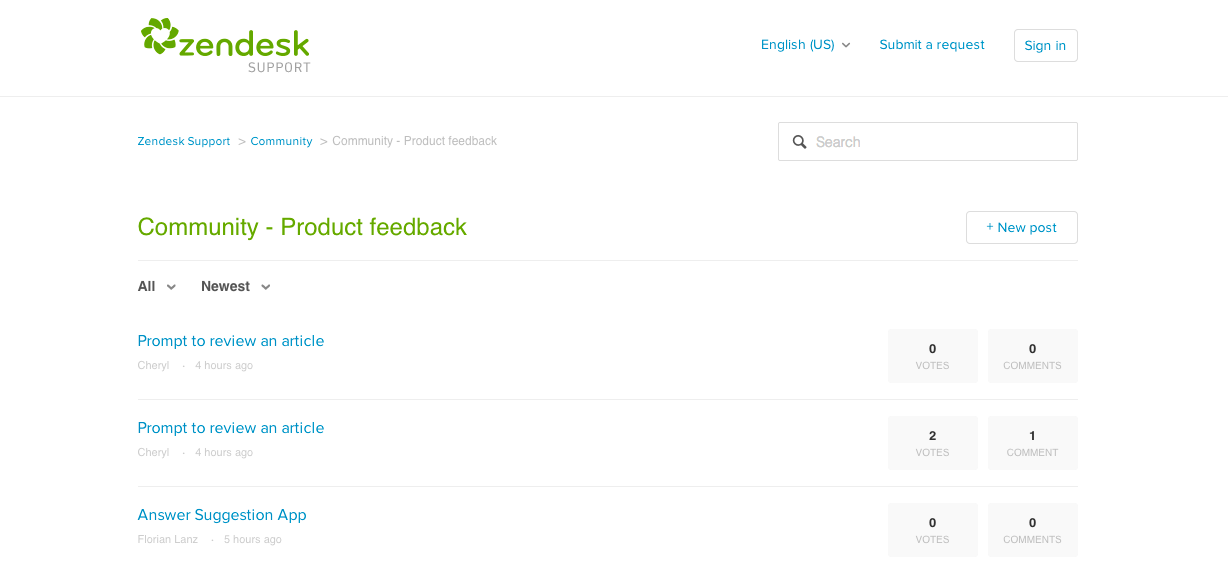
Image source: Zendesk
You won’t always be able to retain customers, even with a 110% commitment to keeping them happy. But you can always ask for input from former customers to find out why they left. This can shed light on how you can hang on to more customers in the future.
Here’s how CloudSponge did it:
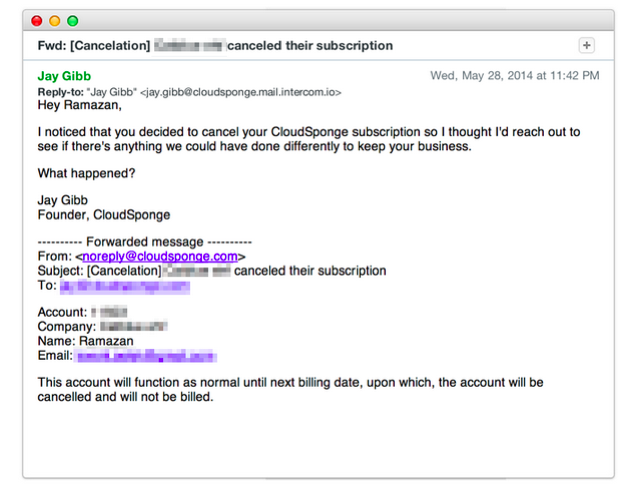
Image source: Intercom
You can’t retain all your customers, but you can always show them you’re willing to listen to their concerns and improve.
Set Realistic Expectations up Front
If you and your customers are on different pages, you’re setting yourself up for dissatisfaction and a high churn rate.
You might be crushing industry standards when it comes to shipping, customer service, and everything else. But do your customers understand that? Or are they holding you to a different (unrealistic) standard?
Some businesses win customers by promising them the moon. They claim they’ll see “instant results”… or whatever it takes to close the sale.
But what happens when those claims don’t come true? Customers get upset and leave. Then the businesses have to look for new customers to replace them.
Another way to handle this—a more sustainable way—is to be realistic up front about what customers should expect. If anything, err on the conservative side when discussing what you can do. Customers always appreciate it when you over deliver.
Zappo’s does this with their shipping policy. Most of their shoes ship within 24 hours… but they don’t promise customers that. Instead, they lay out a much more conservative 5-day shipping policy.
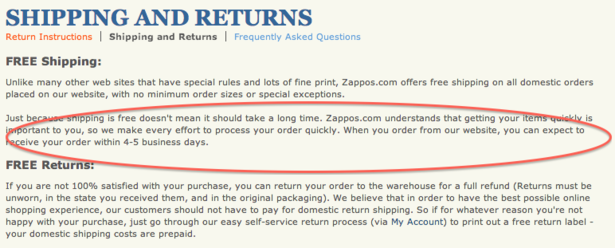
Image source: Econsultancy
The result? Customers are ecstatic when their purchases arrive before they expected. You can make a habit of delighting customers too. You might not even need to change the customer experience. It could just be a matter of getting clear about expectations.
Invest in Your Most Valuable Asset
You can keep spending most of your money and time filling a revolving door of customers. That’s what most businesses do.
Or you could invest your attention on your most valuable assets: your current customers.
Retaining more of them isn’t rocket science. A lot of it comes down to treating them like human beings instead of numbers on a balance sheet. It comes down to showing them that they matter.
Your customer retention strategy doesn’t have to be fancy, but it has to be a priority to work. So start today. You’ll spend less time trying to replace people who fall through the cracks… and more time strengthening relationships and growing your business.




